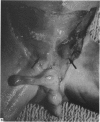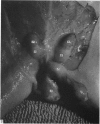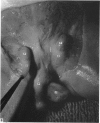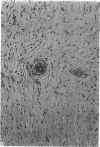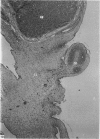Abstract
This study of 178 male human fetuses and infants demonstrates that descent of the testis through the inguinal canal is a rapid process, with 75% of testes descending between 24 and 28 weeks of gestation. The gubernaculum is a cylindrical, gelatinous structure attached cranially to the testis and epididymis. While the testis is in the abdomen, the caudal tip of the gubernaculum is firmly attached to the region of the inguinal canal. In a few fetuses prior to descent the globular tip of the gubernaculum can be seen bulging through the external inguinal ring, covered by superficial fascia, with no macroscopically discernible extensions to the scrotum or any other area. Once the testis has passed through the inguinal canal, the bulbous lower tip of the gubernaculum is no longer firmly attached to any structure, nor does it extend to the bottom of the scrotum. Histologically the gubernaculum consists of undifferentiated mesenchymatous tissue. Prior to descent of the testis, there is an increase in the length of the intra-abdominal gubernaculum. The wet mass of the gubernaculum relative to the fetal mass increases rapidly prior to descent, while the relative wet mass of the testis remains constant during this period. There is also an increase in the wet/dry mass ratio of the gubernaculum, denoting an increase in its water content prior to descent. This indicates that a combination of growth processes is responsible for testicular descent, with the increase in the size of the gubernaculum playing the most important role in passage of the testis through the inguinal canal.
Full text
PDF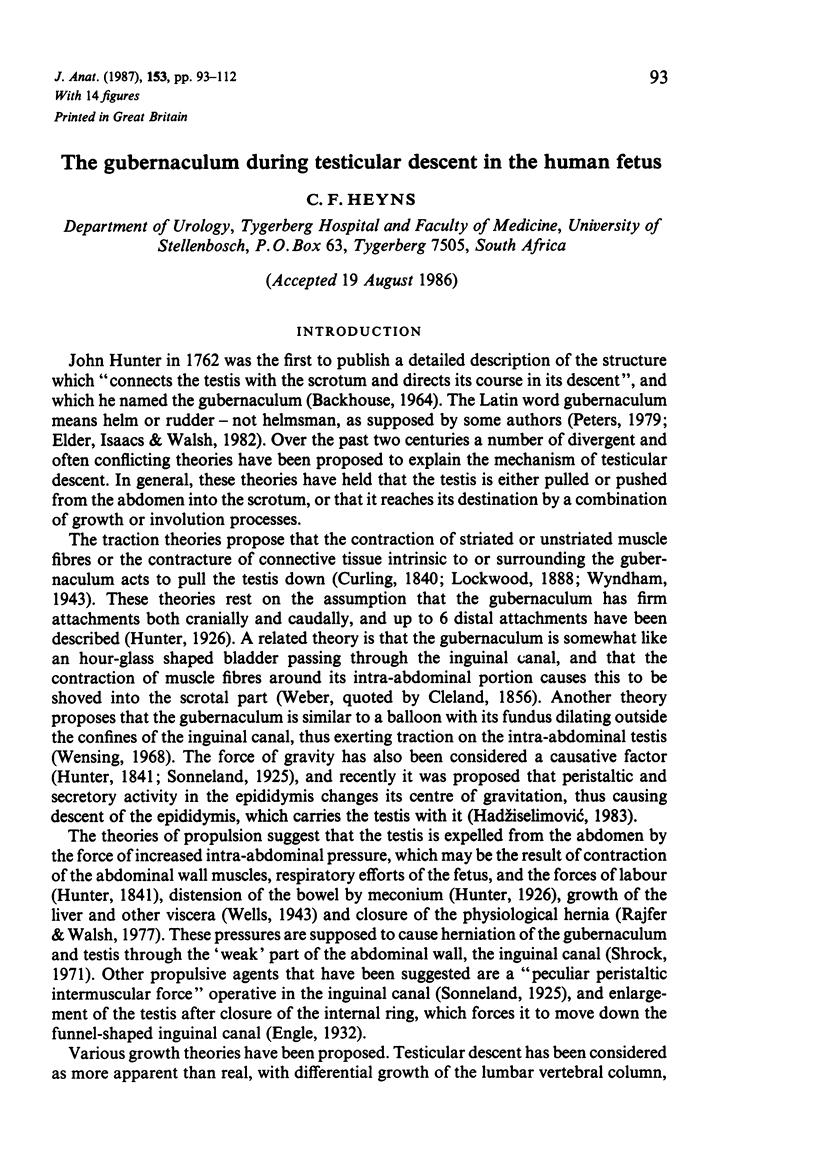
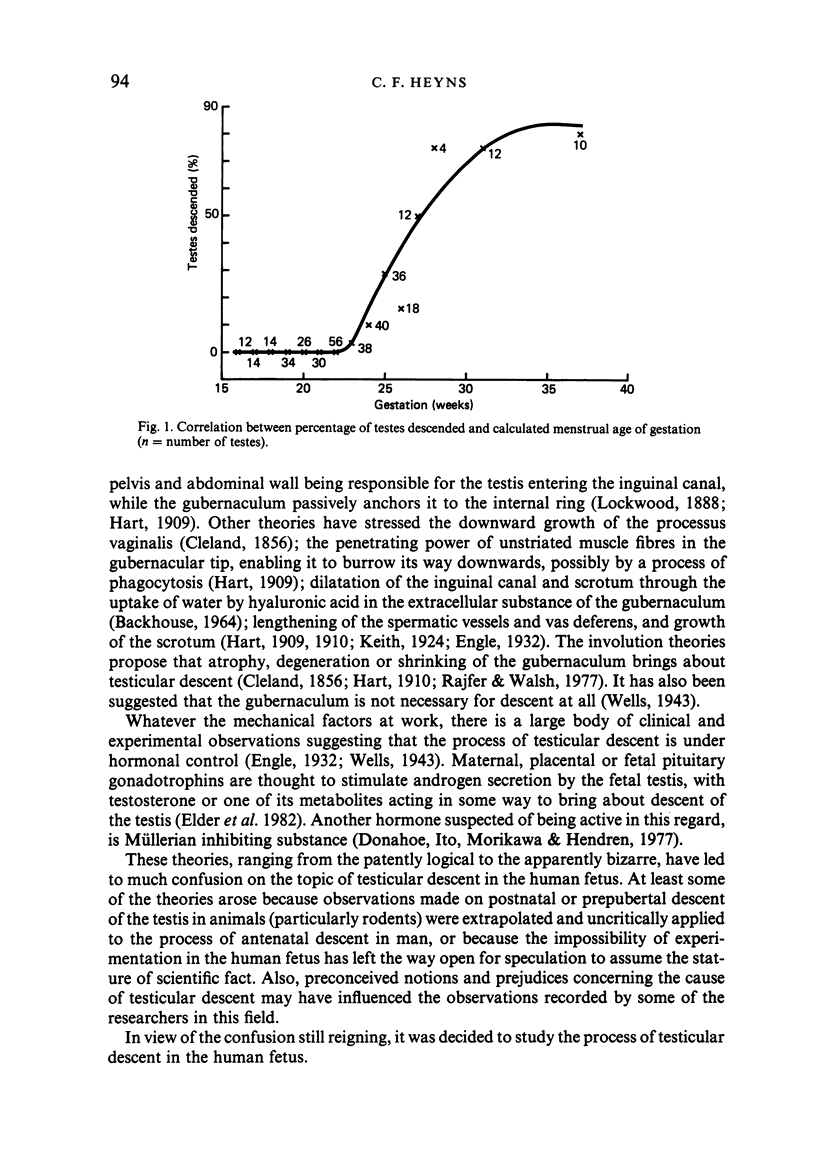
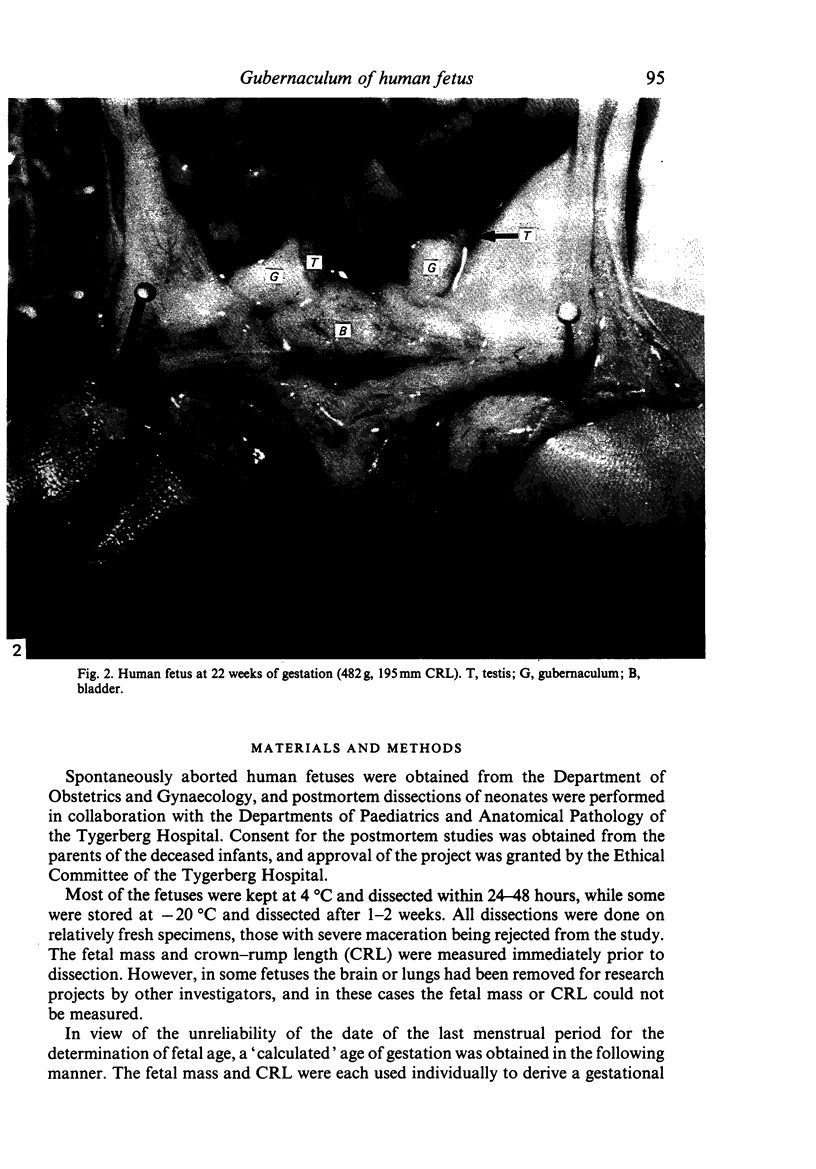
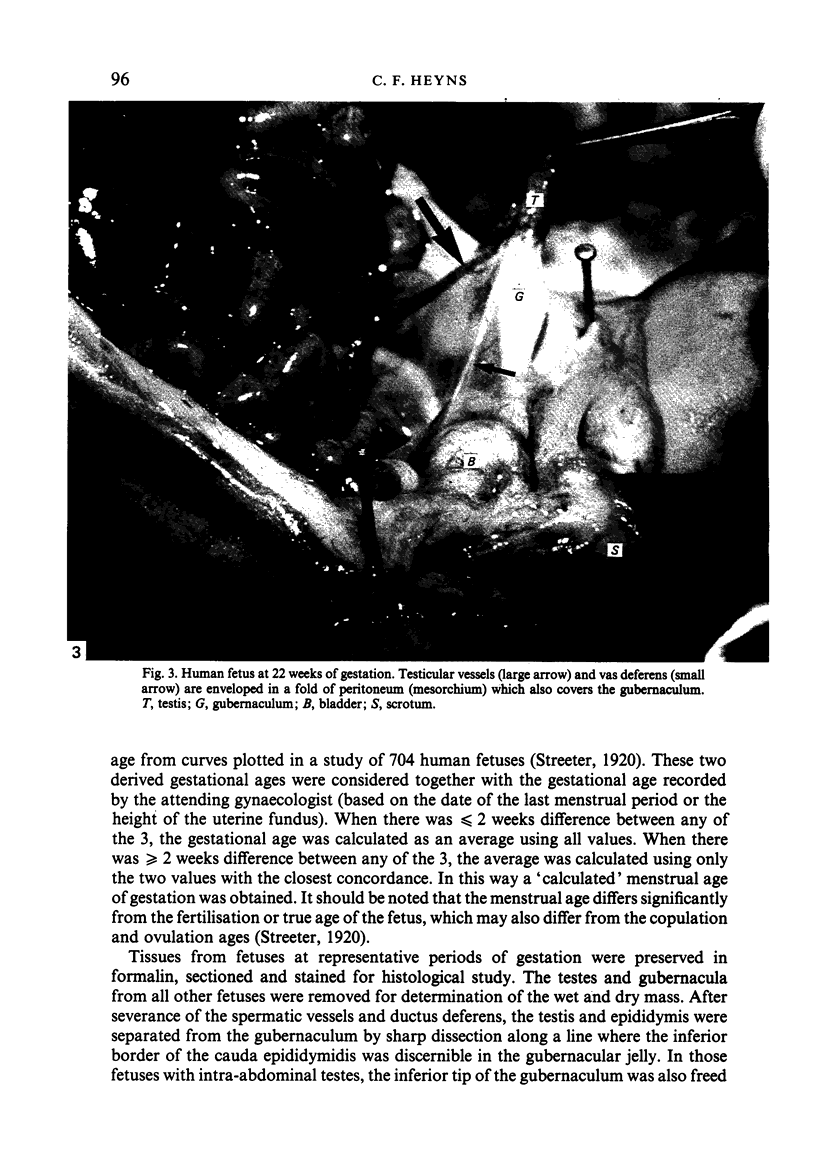
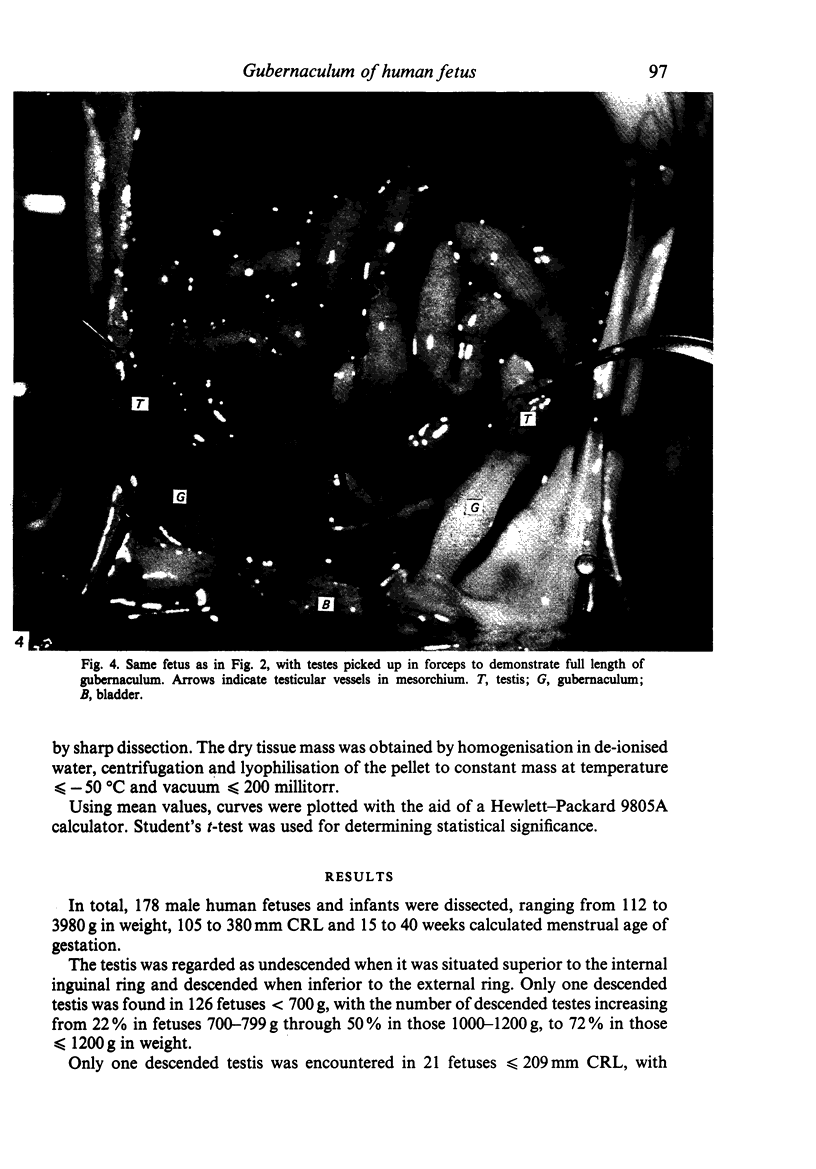
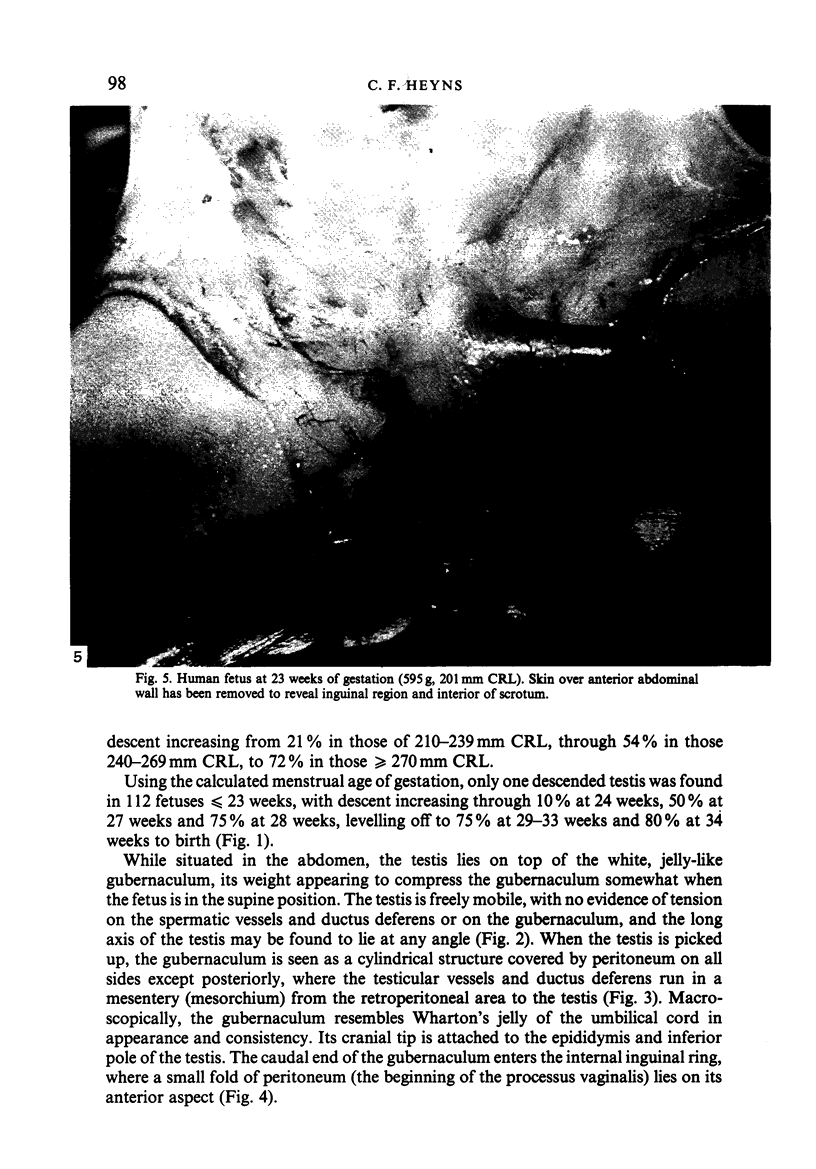
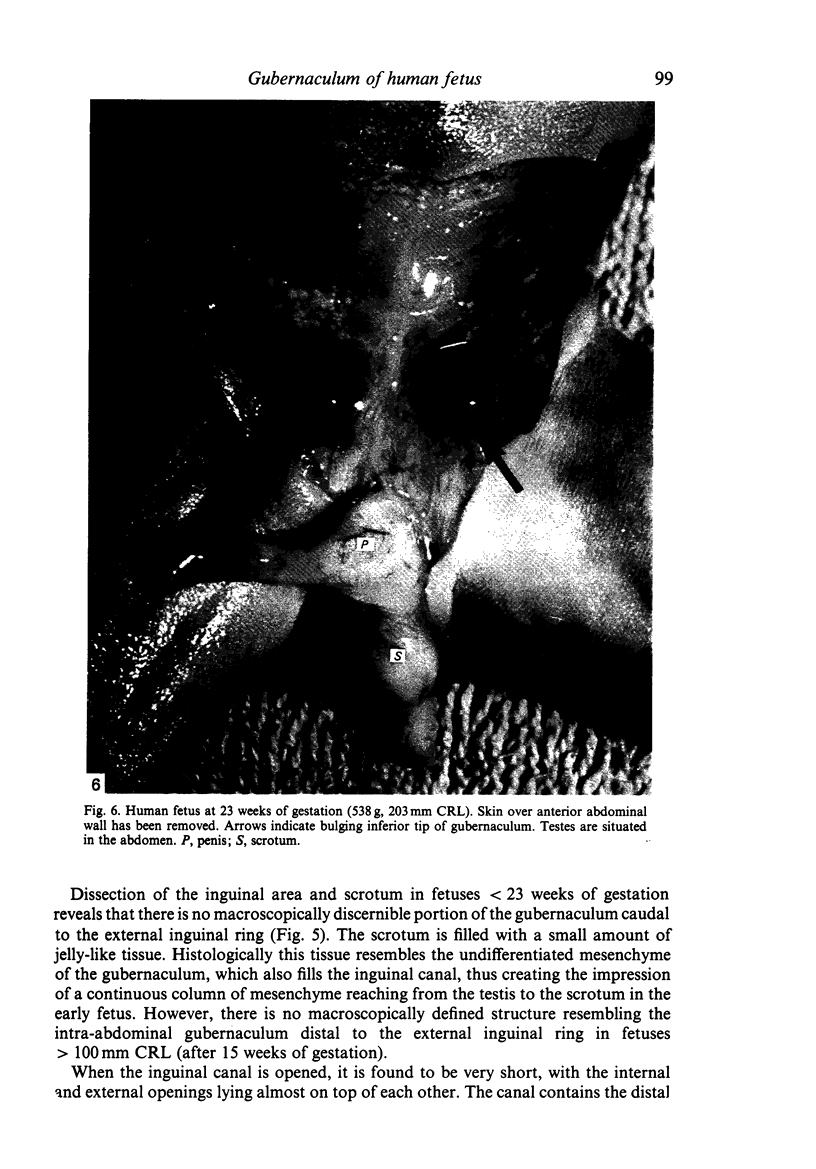
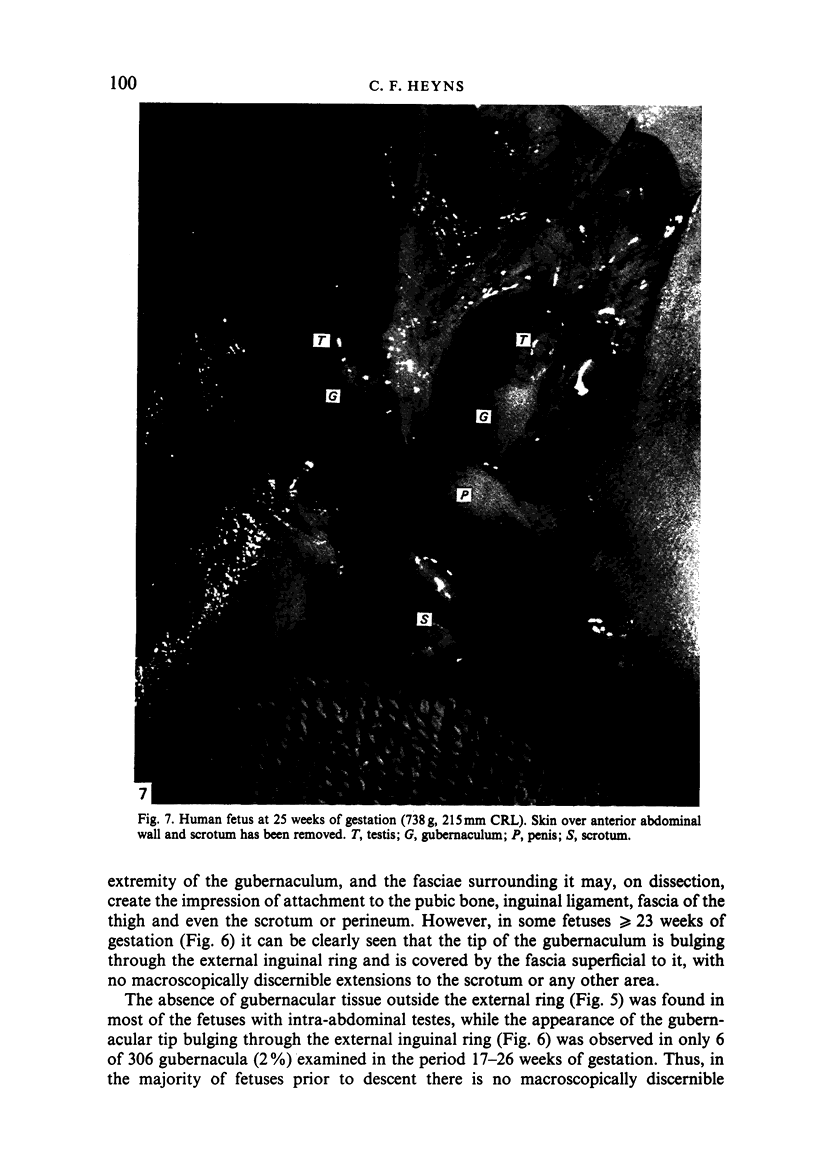
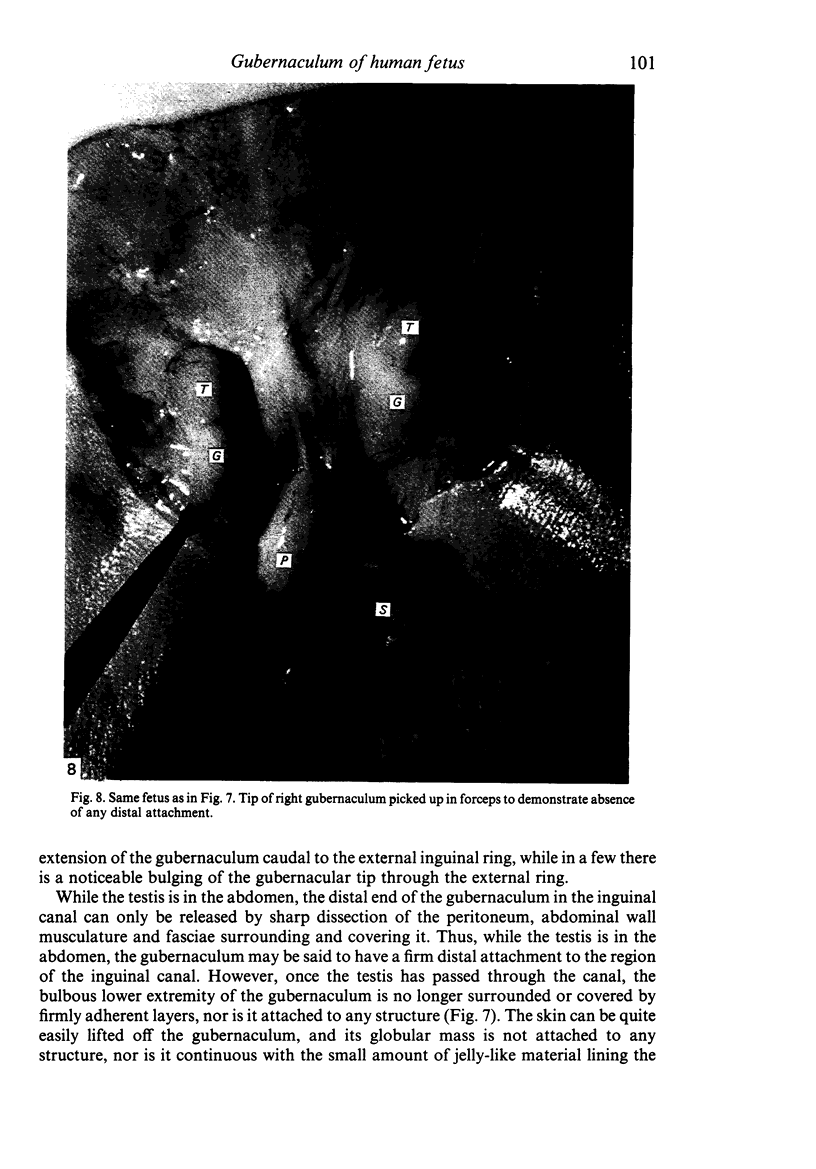
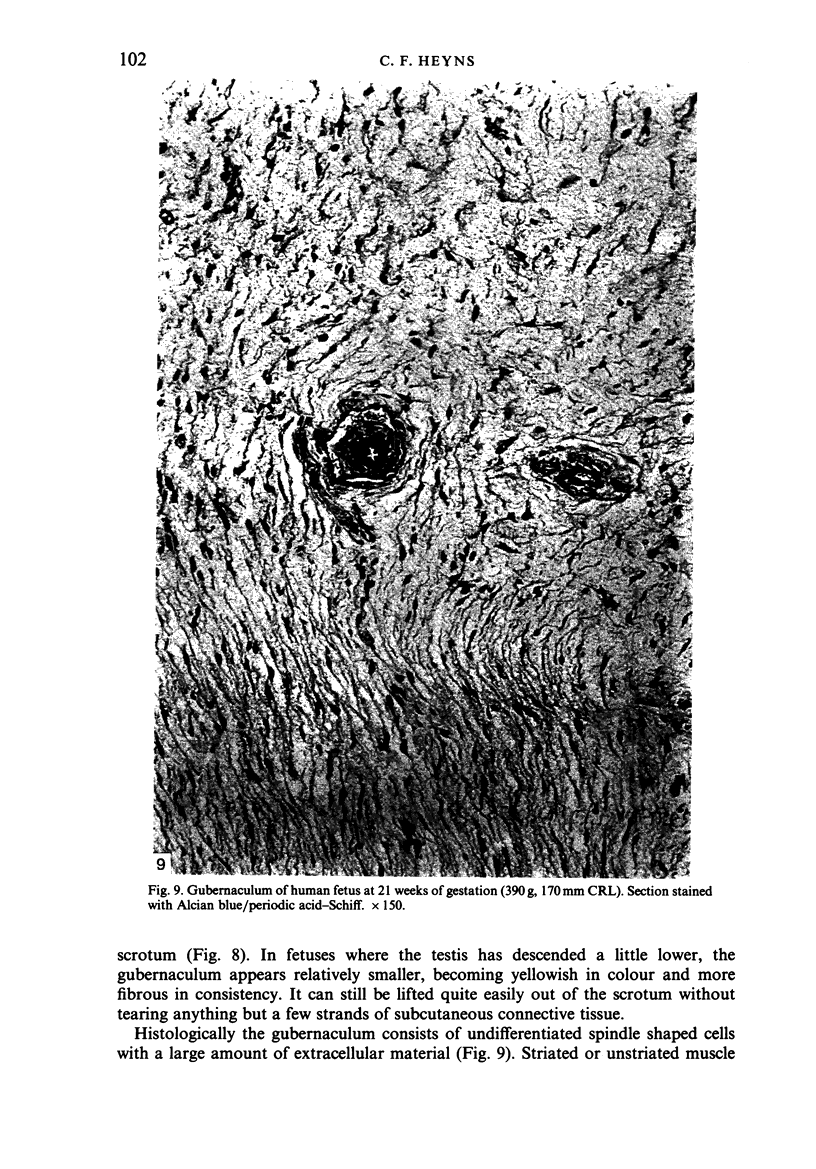
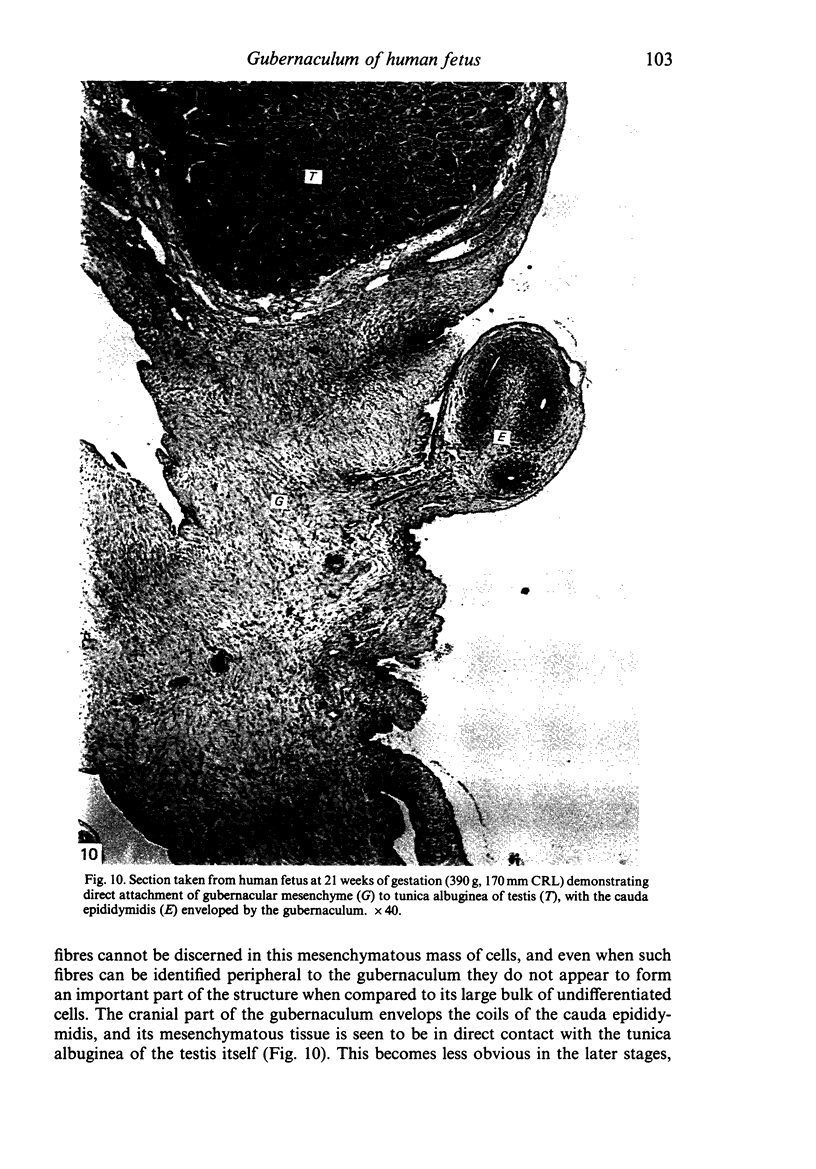
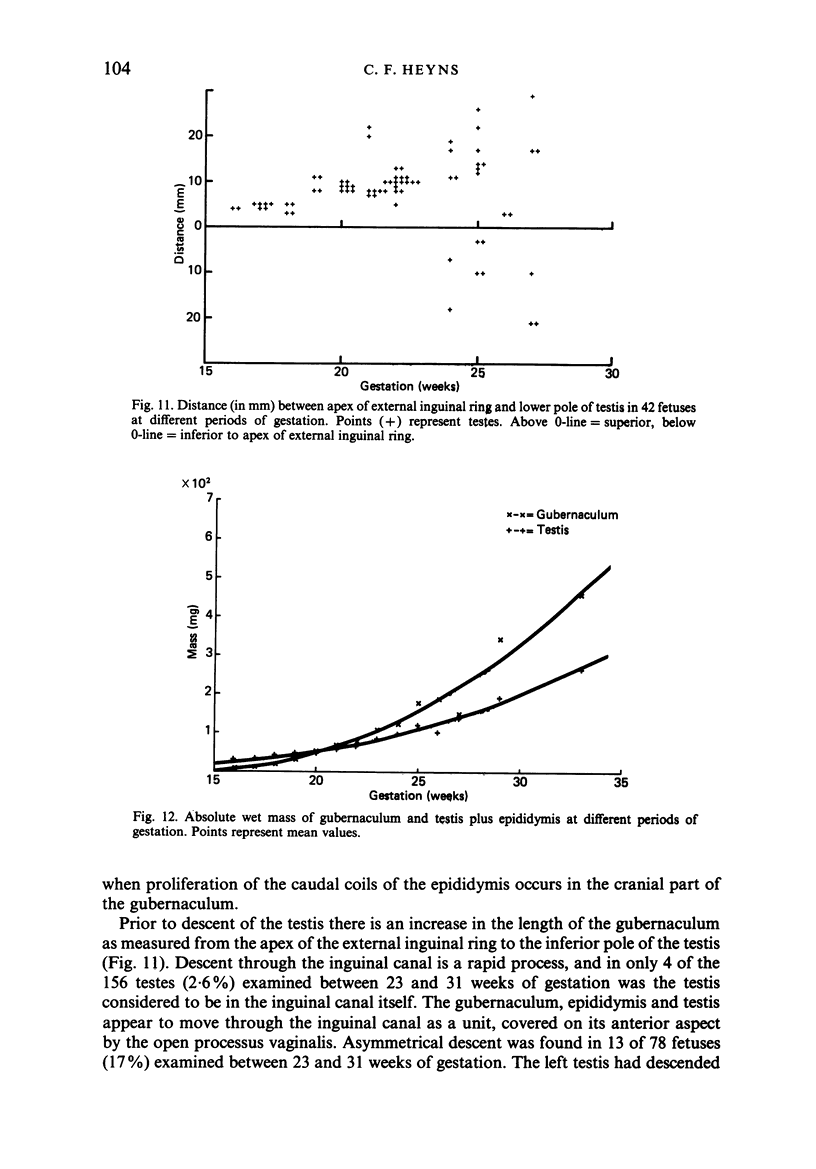
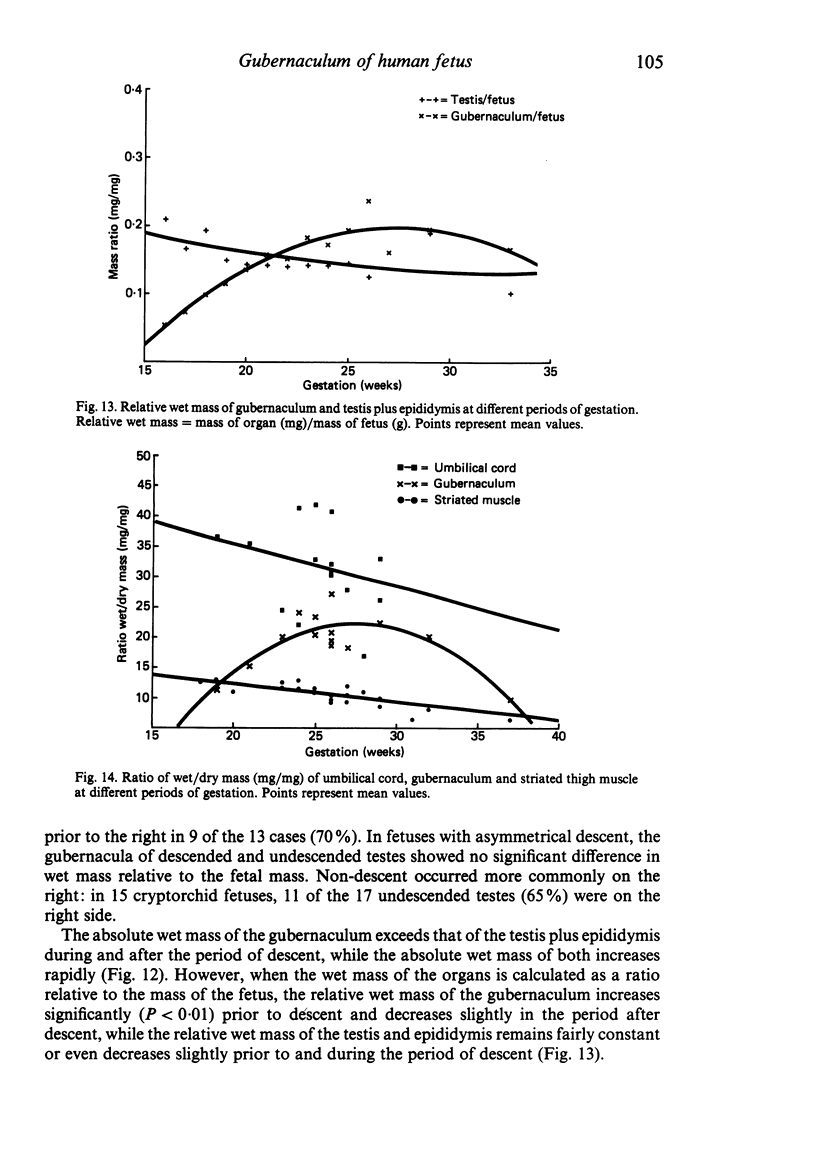
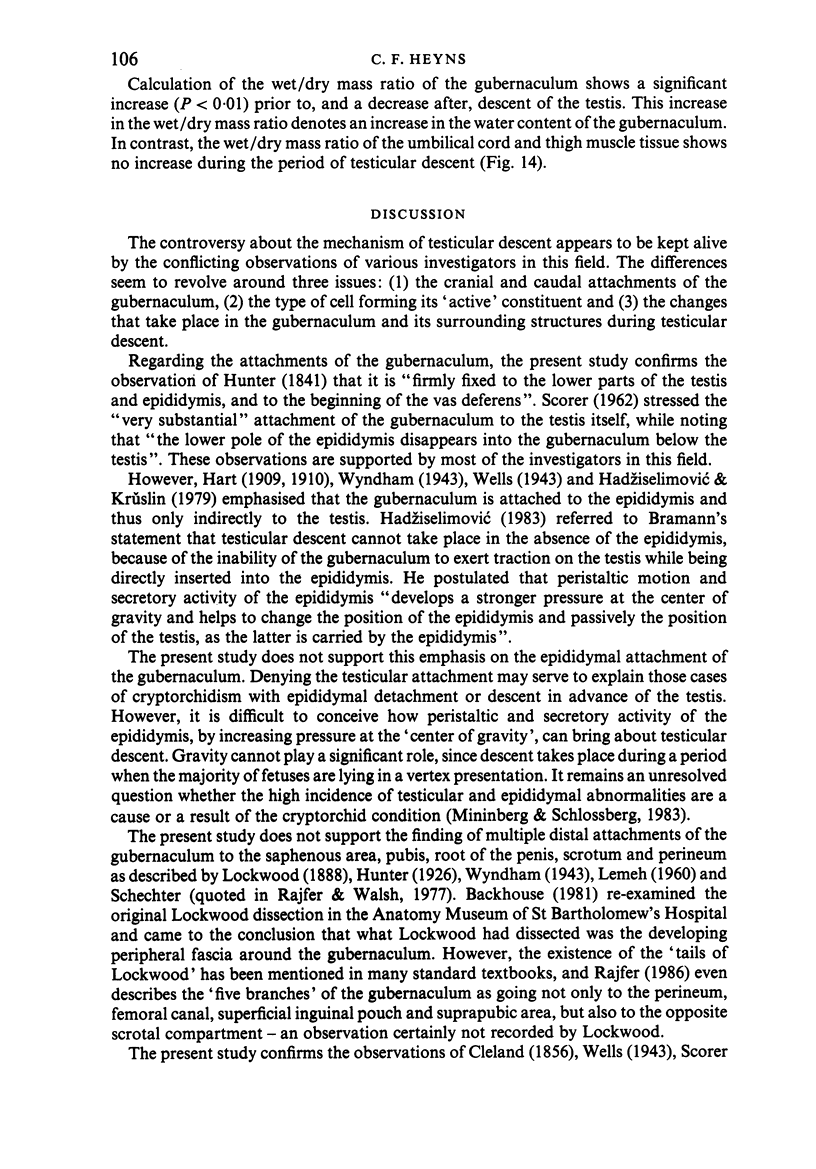
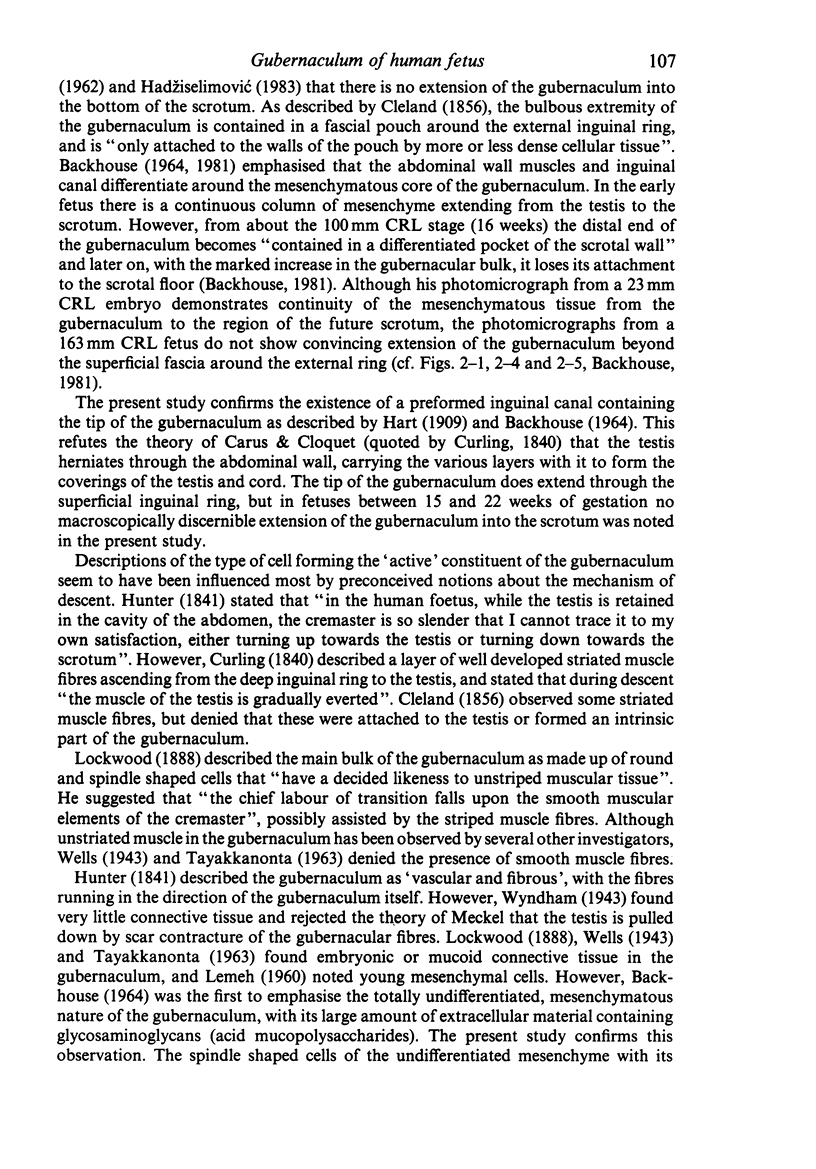
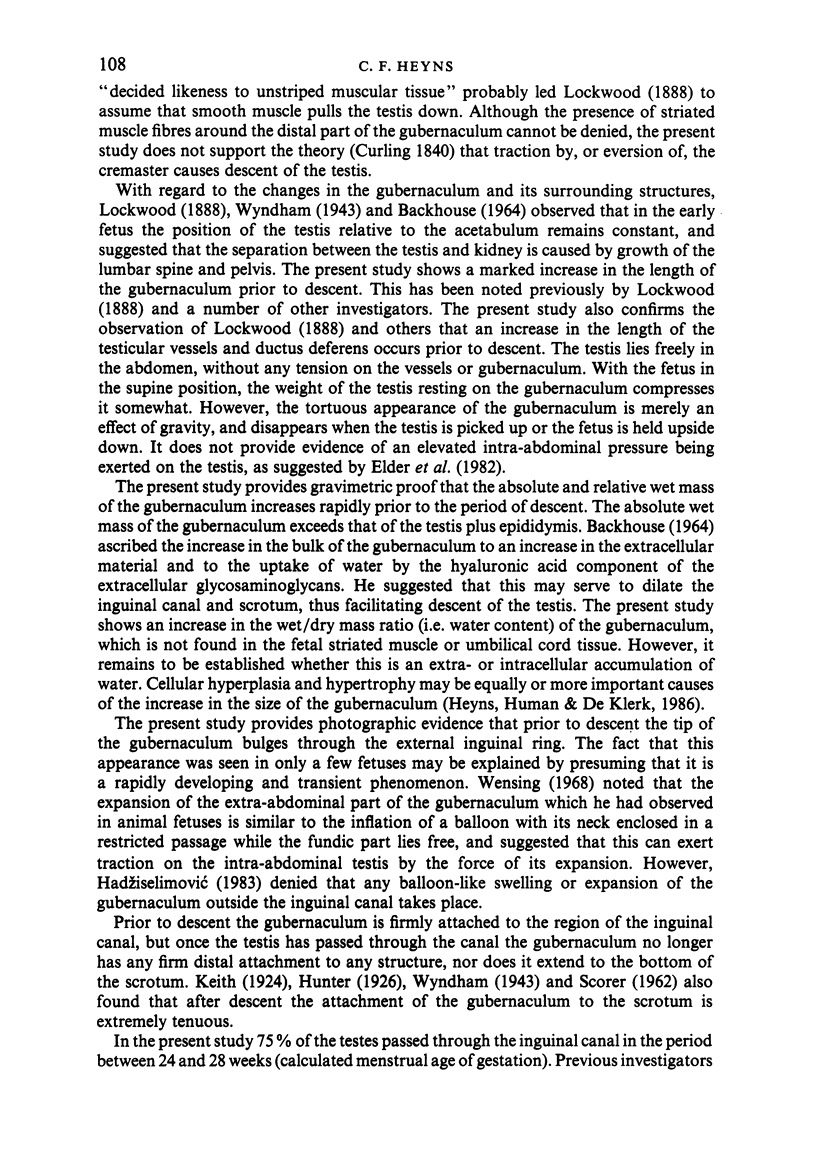
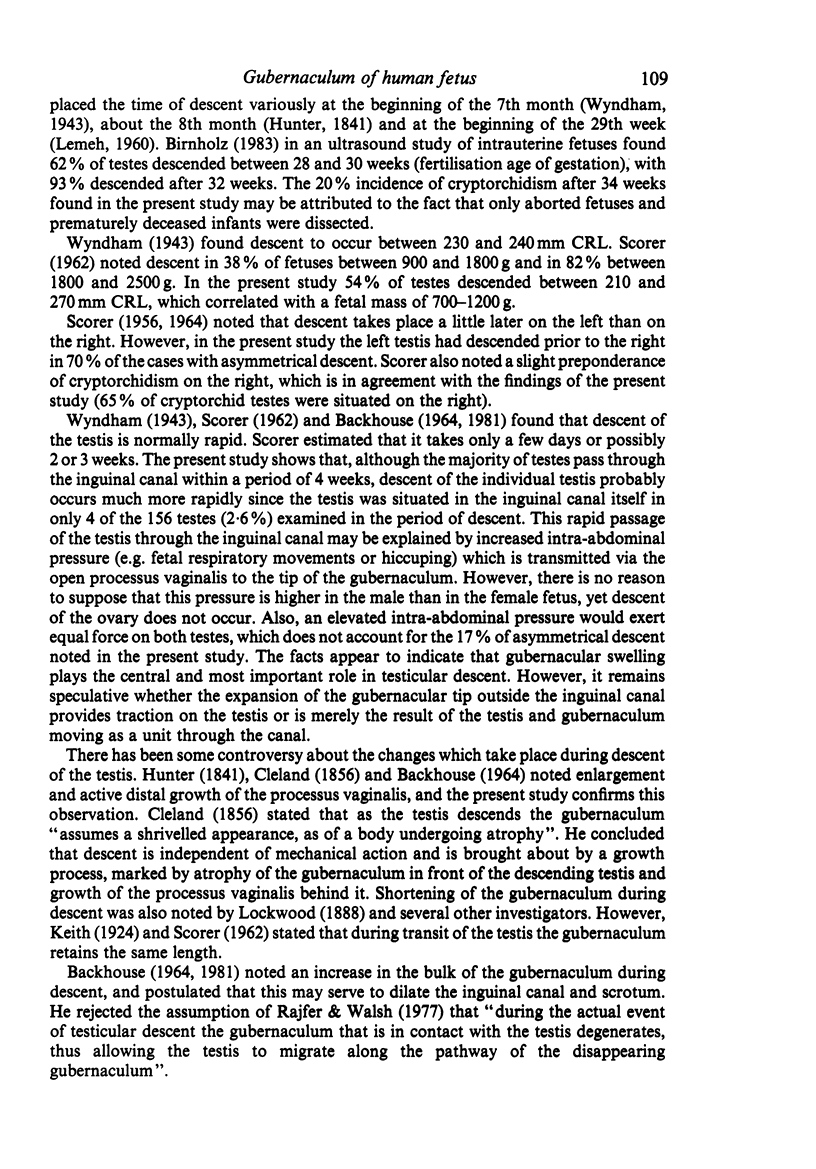
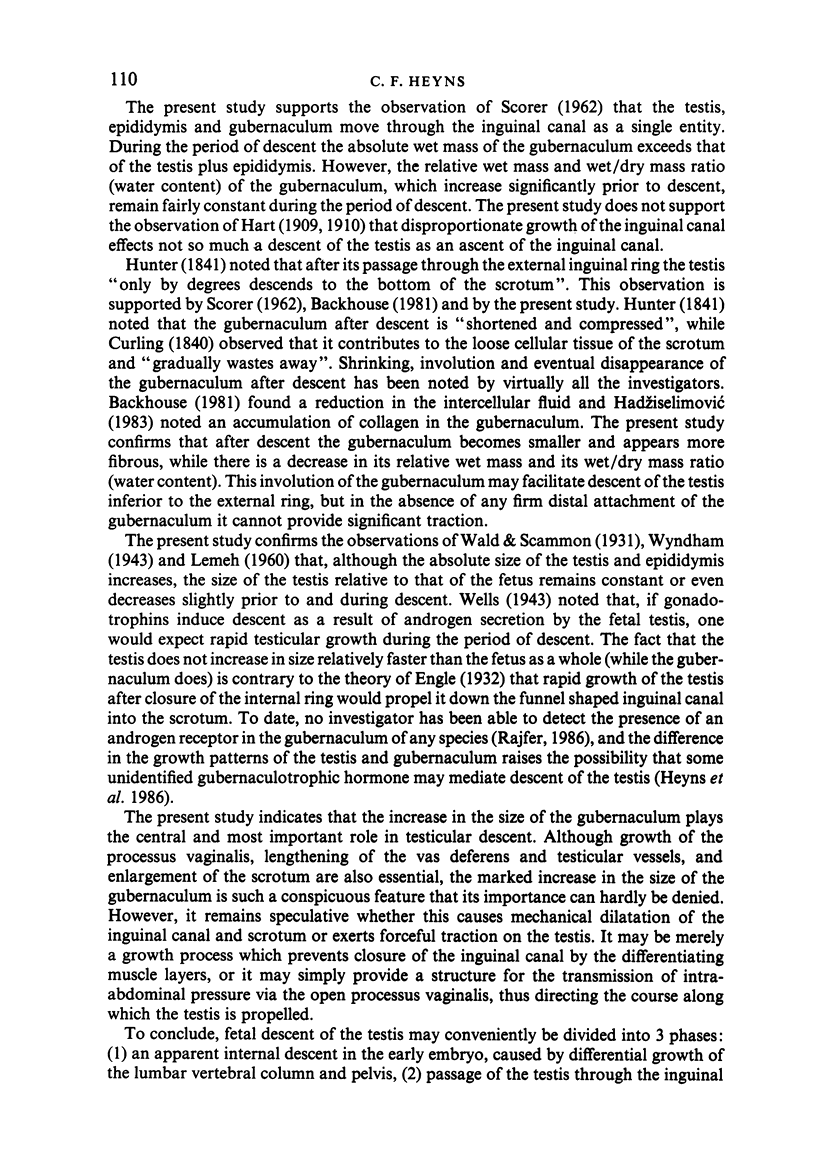
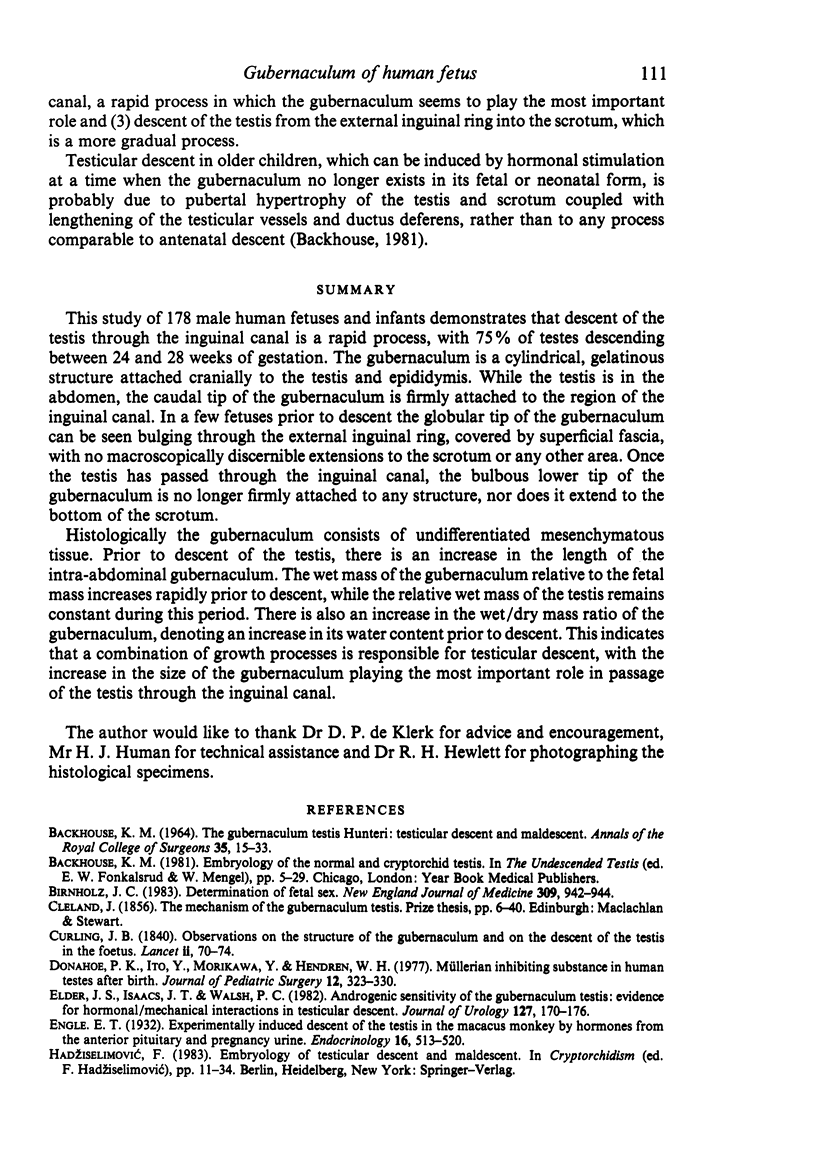
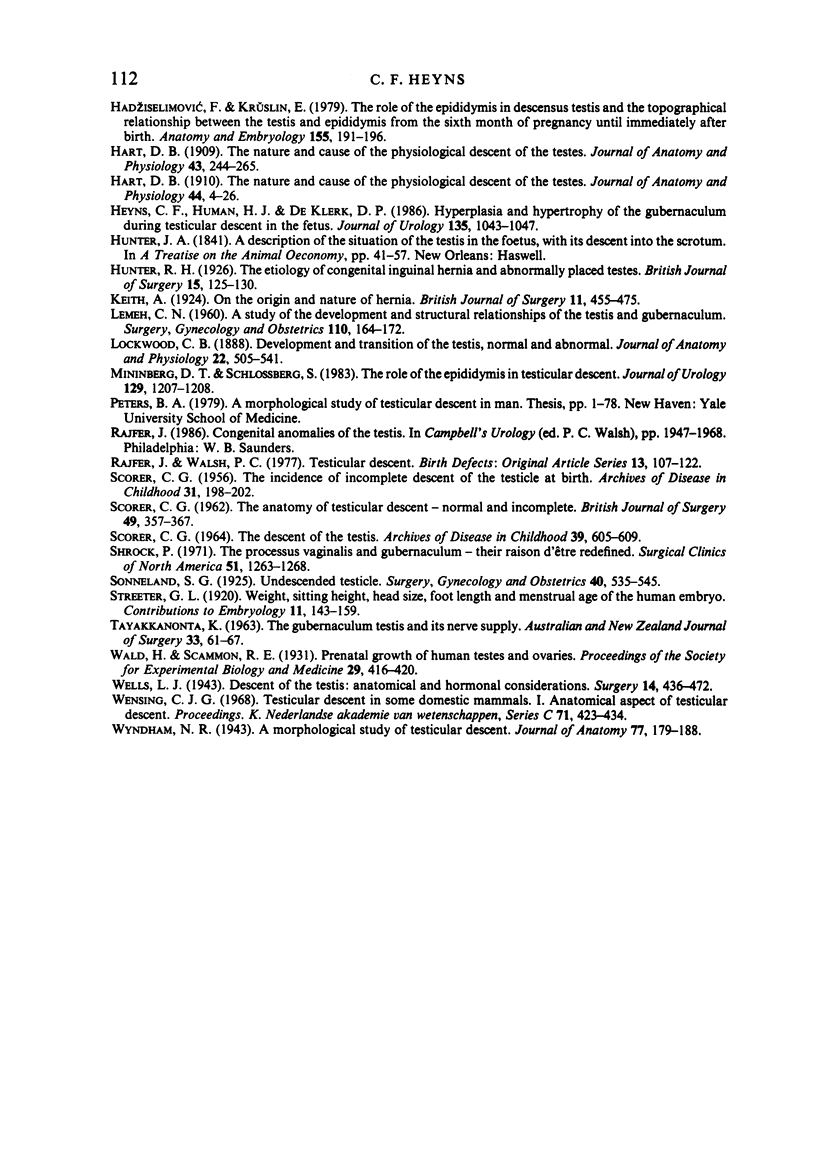
Images in this article
Selected References
These references are in PubMed. This may not be the complete list of references from this article.
- BACKHOUSE K. M. THE GUBERNACULUM TESTIS HUNTERI: TESTICULAR DESCENT AND MALDESCENT. ARRIS AND GALE LECTURE DELIVERED AT THE ROYAL COLLEGE OF SURGEONS OF ENGLAND ON 27TH OCTOBER 1959. Ann R Coll Surg Engl. 1964 Jul;35:15–33. [PMC free article] [PubMed] [Google Scholar]
- Birnholz J. C. Determination of fetal sex. N Engl J Med. 1983 Oct 20;309(16):942–944. doi: 10.1056/NEJM198310203091602. [DOI] [PubMed] [Google Scholar]
- Donahoe P. K., Ito Y., Morikawa Y., Hendren W. H. Mullerian inhibiting substance in human testes after birth. J Pediatr Surg. 1977 Jun;12(3):323–330. doi: 10.1016/0022-3468(77)90008-2. [DOI] [PubMed] [Google Scholar]
- Elder J. S., Isaacs J. T., Walsh P. C. Androgenic sensitivity of the gubernaculum testis: evidence for hormonal/mechanical interactions in testicular descent. J Urol. 1982 Jan;127(1):170–176. doi: 10.1016/s0022-5347(17)53655-1. [DOI] [PubMed] [Google Scholar]
- Hart D B. The Nature and Cause of the Physiological Descent of the Testes. J Anat Physiol. 1909 Apr;43(Pt 3):244–265. [PMC free article] [PubMed] [Google Scholar]
- Hart D B. The Nature and Cause of the Physiological Descent of the Testes. J Anat Physiol. 1909 Oct;44(Pt 1):4–26. [PMC free article] [PubMed] [Google Scholar]
- Heyns C. F., Human H. J., De Klerk D. P. Hyperplasia and hypertrophy of the gubernaculum during testicular descent in the fetus. J Urol. 1986 May;135(5):1043–1047. doi: 10.1016/s0022-5347(17)45972-6. [DOI] [PubMed] [Google Scholar]
- LEMEH C. N. A study of the development and structural relationships of the testis and guernaculum. Surg Gynecol Obstet. 1960 Feb;110:164–172. [PubMed] [Google Scholar]
- Lockwood C B. Development and Transition of the Testis, Normal and Abnormal. J Anat Physiol. 1888 Jul;22(Pt 4):505–541. [PMC free article] [PubMed] [Google Scholar]
- Mininberg D. T., Schlossberg S. The role of the epididymis in testicular descent. J Urol. 1983 Jun;129(6):1207–1208. doi: 10.1016/s0022-5347(17)52645-2. [DOI] [PubMed] [Google Scholar]
- Rajfer J., Walsh P. C. Testicular descent. Birth Defects Orig Artic Ser. 1977;13(2):107–122. [PubMed] [Google Scholar]
- SCORER C. G. THE DESCENT OF THE TESTIS. Arch Dis Child. 1964 Dec;39:605–609. doi: 10.1136/adc.39.208.605. [DOI] [PMC free article] [PubMed] [Google Scholar]
- SCORER C. G. The anatomy of testicular descent--normal and incomplete. Br J Surg. 1962 Jan;49:357–367. doi: 10.1002/bjs.18004921603. [DOI] [PubMed] [Google Scholar]
- SCORER C. G. The incidence of incomplete descent of the testicle at birth. Arch Dis Child. 1956 Jun;31(157):198–202. doi: 10.1136/adc.31.157.198. [DOI] [PMC free article] [PubMed] [Google Scholar]
- Shrock P. The processus vaginalis and gubernaculum. Their raison d'etre redefined. Surg Clin North Am. 1971 Dec;51(6):1263–1268. doi: 10.1016/s0039-6109(16)39581-0. [DOI] [PubMed] [Google Scholar]
- Wyndham N. R. A morphological study of testicular descent. J Anat. 1943 Jan;77(Pt 2):179–188.3. [PMC free article] [PubMed] [Google Scholar]







